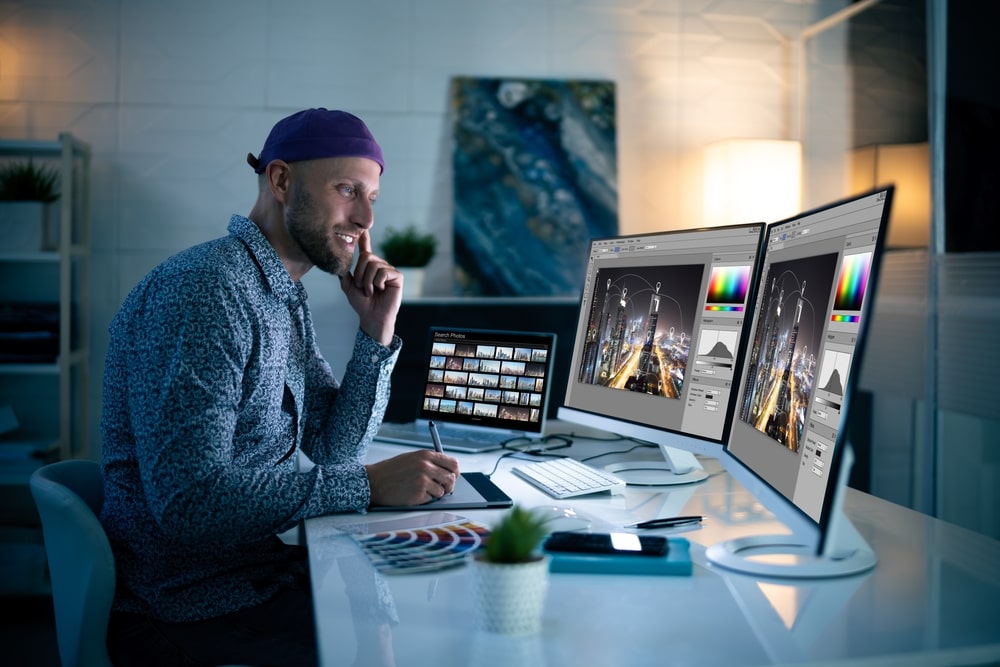Art Bounty
Discover the vibrant world of art and creativity.
Design Software Dilemmas: What Your Choice Says About You
Discover how your design software choices reveal your personality and creativity. Uncover the hidden truths behind your tools!
Choosing Design Software: Insights Into Your Creative Personality
Choosing the right design software can significantly influence your creative process and overall productivity. Your choice often stems from your unique creative personality, which ranges from minimalist to maximalist, intuitive to analytical. Understanding where you fall on this spectrum can help you identify which functionalities and features will enhance your design experience. For example, if you thrive on structure and appreciate detailed control, you might lean towards software with robust vector capabilities and comprehensive editing tools. Conversely, if you crave freedom and spontaneity, simpler, more intuitive platforms could unleash your full creative potential.
Moreover, reflecting on your creative preferences can guide you in selecting the most suitable design software. Consider asking yourself questions that highlight your workflow: Do you prefer a drag-and-drop interface or detailed editing options? Are you more drawn to collaborative tools or standalone applications? By pinpointing these characteristics, you can make an informed decision that aligns with your creative personality. Remember, the right design software not only meets your technical requirements but also resonates with your artistic vision, enabling you to produce your best work.

What Your Preferred Design Tool Reveals About Your Working Style
Choosing a design tool often reflects a deeper understanding of your working style and preferences. For example, if you gravitate towards tools like Adobe Photoshop or Illustrator, it could indicate that you value precision and detail in your designs. These tools allow for intricate edits and offer extensive features, suggesting that you may be the type of designer who enjoys getting into the nitty-gritty of a project. Conversely, if you're drawn to more minimalist design tools like Canva or Figma, this might reveal a preference for efficiency and collaboration. These platforms tend to emphasize user-friendliness and team-oriented features, suggesting that you enjoy working in environments that foster teamwork and rapid iteration.
Your choice in design tools can also showcase how you handle feedback and challenges. For instance, if you prefer tools that are highly customizable, such as Sketch, it may indicate that you are adaptable and open to experimenting with new ideas. Such tools enable you to tweak and refine aspects of your design, demonstrating a willingness to iterate based on user feedback. On the other hand, if you rely on conventional tools that have a more rigid structure, you might represent a more traditional approach to design where guidelines and established processes take precedence. Understanding these nuances can help you identify working styles and the dynamics within your creative process.
The Design Software Debate: Are You a Creative Explorer or a Structured Planner?
The design software debate often divides creatives into two distinct camps: the Creative Explorers and the Structured Planners. Creative Explorers thrive on spontaneity and experimentation, often favoring software that allows for freeform creativity and adaptability. They may gravitate towards tools that encourage brain dumps, such as Sketch or Procreate, where inspiration can flow freely and the design process is more intuitive. In contrast, Structured Planners rely on software that emphasizes organization and adherence to established design protocols. Programs like Adobe Illustrator and Figma offer the precision and structure that help these designers work efficiently, enabling them to create polished, user-centered designs with carefully constructed workflows.
Understanding which type of designer you are is crucial in selecting the right tools for your creative process. Creative Explorers may appreciate features like fluid layouts and experimental brushes, while Structured Planners benefit from grid systems, collaboration tools, and version control. Recognizing your strengths can influence not only your choice of design software but also your overall productivity and satisfaction in your work. As the design landscape continues to evolve, finding the right balance between exploration and structure can unlock new levels of creativity, regardless of whether you lean more towards spontaneous innovation or methodical execution.